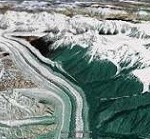The recent ambush of two Indian soldiers and the beheading of one on the Line of Control (LOC), on 8 January 2013, has created quite a fuss in the media resulting in hawkish statements from both sides. Amid the clamour, the Pakistan foreign minister, the Indian government, and the Indian Army Chief have all made statements varying in tone and tenor. In such a situation there is a real danger of the situation spiralling out of control due to media hysteria. A closer examination of the environment in which such an episode has come to pass will show that this is a symptom of a much larger problem.
The roughly 770km-long LOC has been in existence under various names since 1948 when Pakistan tried to annexe Jammu and Kashmir (J&K) under the garb of a tribal uprising. An international border is mutually agreed between two countries and internationally recognised. On the other hand the LOC implies ‘control,’ and it evolved from the end of Indo-Pakistan hostilities in 1949. Without going into the details, Pakistan essentially wanted an internationally monitored plebiscite in J&K, whereas India’s stance was that the plebiscite could only happen after the armed forces of both countries withdrew to pre-hostility positions. In the face of this intransigent situation, the ‘control’ of the LOC by both countries was maintained by keeping the line ‘alive,’ by exchanging fire of weapons ranging from small arms to artillery duels. Cross border raids and incursions were an essential part of this violence; the most infamous being the Kargil conflict of 1999. In 2003, both countries agreed to a ceasefire and code of conduct on the LOC; this too continued to be breached to suit the designs of both countries at particular times. The present violence must be seen against this backdrop.
Further north of the LOC is the Actual Ground Position Line (AGPL) which defines Army positions of India and Pakistan in the Siachen Glacier region where the Indian Army occupies commanding positions. This came about due to a lack of clear marking in the LOC delineated by the UN in 1949. The UN officials presumed there would be no dispute between India and Pakistan over such a cold and barren region. This is the basis for the AGPL, which is even more contentious than the LOC. Recently, Track II efforts towards demilitarisation of the Siachen Glacier were undertaken by both sides (See Siachen: to Hold or to Fold?). This Track II attempt, in their haste to arrive at a solution, appears to have paid conveniently scant attention to the realities of the entire LOC.
From an Indian perspective the ground realities that need to be seriously considered when talking about solutions to this and other LOC related problems are:
- There is a fundamental difference of national opinion in India and Pakistan with regard to the status of J&K. These differences have hardened over time into near irrevocable positions. It would be political suicide for the Government of either country to make significant concessions here.
- It would be very difficult to solve just ‘part’ of the problem; the entire LOC and AGPL needs to be addressed in any attempt at finding a solution.
- Pakistan has categorically denied incursions across the LOC, from the ‘tribal uprising’ of 1948 to the occupation of heights by ‘mujahids’ during the 1999 Kargil violation of the LOC. In most cases, clear evidence of Pakistan Army involvement has been presented to no avail. Clearing such a ‘non-attributable tribal incursion’ in Siachen would be costly, both in lives and money. Even in the recent raid, Pakistan has denied culpability, demanding international investigation –an old ruse to invoke international mediation. India is also viewed as weak in its response to perceived grave provocation from Pakistan, for instance, in India’s response to terror attacks at home, notably 26/11 in Mumbai, and the current situation. Each time, New Delhi has threatened strategic action but not followed through.
- Pakistan will ramp up tensions on the LOC when it needs to deflect domestic opinion from hardships at home. There is also a view that cross-LOC violence by Pakistan is a smoke-screen to push infiltrators across into Kashmir.
Many years ago, a senior government officer in J&K cynically said that the J&K problem is insolvable mainly because no one wants a solution. Certainly not the Pakistan government which needs a constant diversion from its domestic turbulence, a diversion most easily aimed at India; not the Pakistan Army, whose very reason for existence is continued conflict with India. Nor do the Indian Armed forces and security forces, which derive budgets and empires from continued deployment and conflict with Pakistan; Neither does the Indian government apparatus, which derives huge power from disbursing the funds at its discretion – the enormous Rs. 7,000 crores (2012-2013) of national aid flowing annually into the state.
Knee-jerk reactions by the government and armed forces, fuelled by media frenzy, and attempts at appearing gushingly good in the international context by India cannot solve the 6 decade-old problem. In such a controversial situation, finding a solution will first require national will and mandate; then we require the flexibility to move away from rigid positions anchored in history. Only from this political – not military – solution can emerge an informed and detailed national debate on a realistic and contemporary resolution of territorial claims by both sides.
Xerxes Adrianwalla is a retired Brigadier of the Indian Army and a regular contributor to Gateway House: Indian Council on Global Relations.
This article was exclusively written for Gateway House: Indian Council on Global Relations. You can read more exclusive content here.
For interview requests with the author, or for permission to republish, please contact outreach@gatewayhouse.in.
© Copyright 2013 Gateway House: Indian Council on Global Relations. All rights reserved. Any unauthorized copying or reproduction is strictly prohibited


